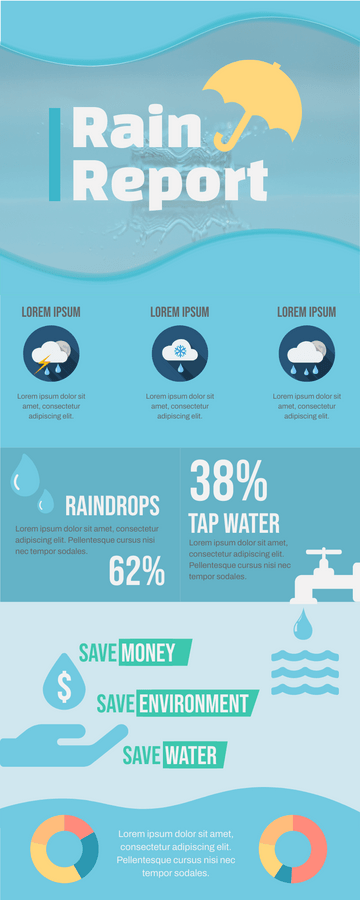Rain Infographics
How long does rain take to reach the ground?
When raindrops form high up in the atmosphere, they fall towards the ground due to the force of gravity. On average, it takes a raindrop just over 2 minutes to complete its descent from the clouds and touch the Earth’s surface. However, this timeframe may vary depending on factors such as the size of the raindrop and the prevailing wind conditions.
Rain on other planets:
Contrary to popular belief, rain is not exclusive to Earth. Rainfall has been observed on other celestial bodies within our Solar System. However, it is essential to note that the composition and behavior of rain on these planets differ significantly from what we experience here. For example, on Venus, sulfuric acid rain evaporates before it reaches the planet’s surface due to the extreme heat, while on Saturn’s moon, Titan, rain is composed of liquid methane.
The wettest place in the world:
If you ever find yourself seeking the ultimate rain experience, you might consider visiting Cherrapunji, a town in Meghalaya, India. Until recently, Cherrapunji held the title for being the wettest place on Earth, with an average annual precipitation of around 11,777 millimeters. However, the current record holder is Mawsynram, also located in Meghalaya, with an average annual rainfall of approximately 11,871 millimeters. These regions experience such high rainfall due to their proximity to the Bay of Bengal and the influence of monsoon winds.
Rain is a remarkable natural phenomenon that connects us with the intricate workings of our planet and beyond. Whether it’s the journey of raindrops from the clouds to the ground, the occurrence of rain on other celestial bodies, or the extreme precipitation in certain parts of the world, there is always more to explore and learn about rain. So, next time you find yourself caught in a rain shower, take a moment to appreciate the beauty and complexity of this incredible natural phenomenon.

To further explore the fascinating world of rain, consider creating a poster or an infographic presentation using tools like Visual Paradigm Online. You can visually represent the journey of raindrops, compare rainfall patterns on different planets, or highlight the wettest places on Earth. Let your imagination run wild as you contribute to the rich tapestry of knowledge about rain.

